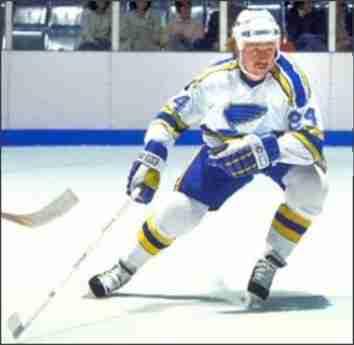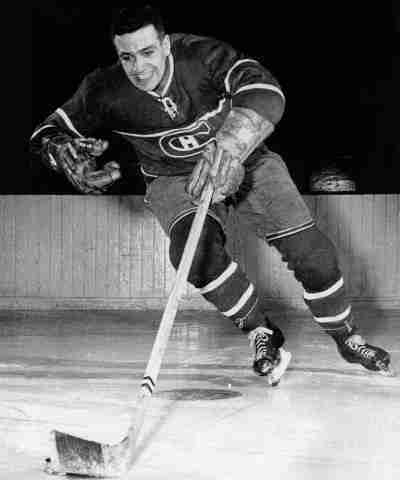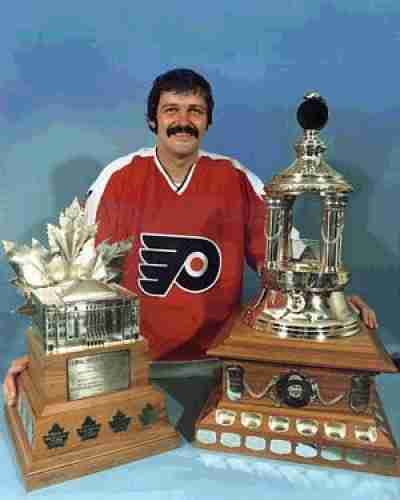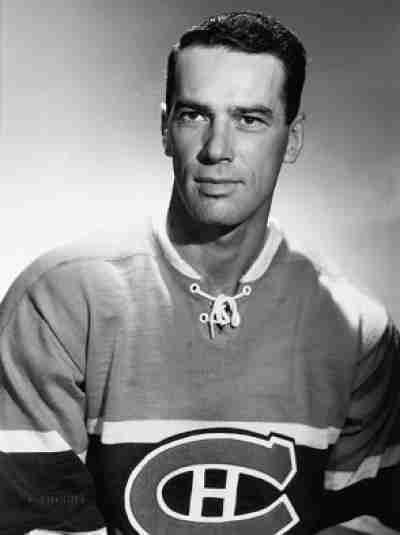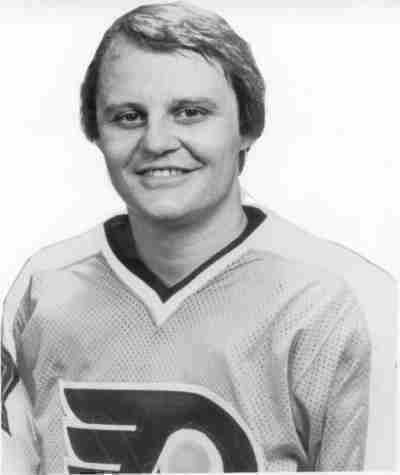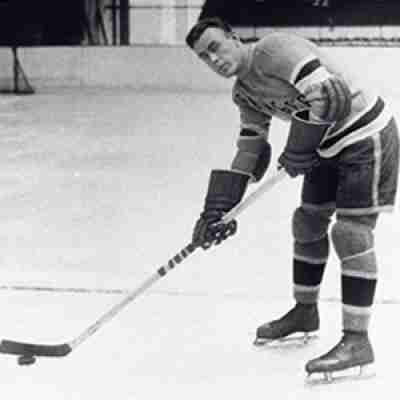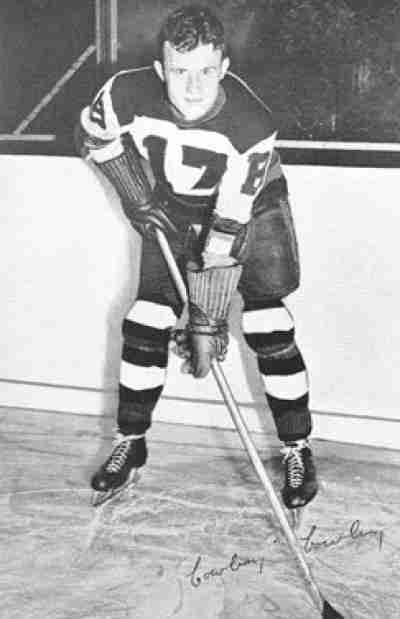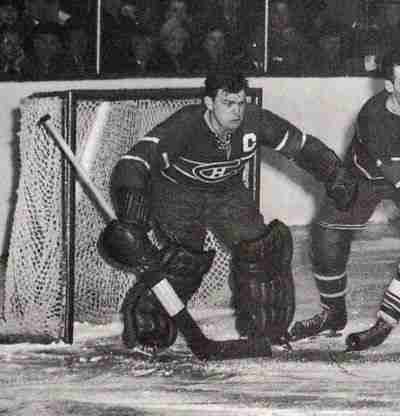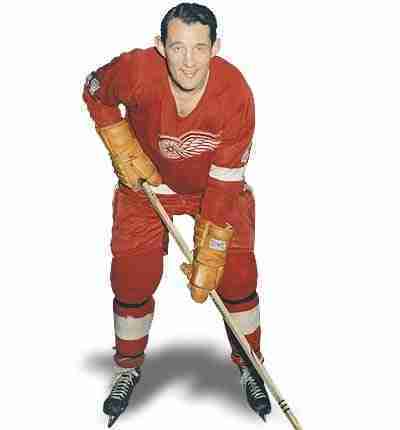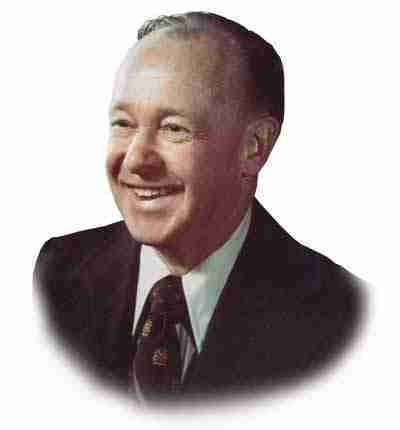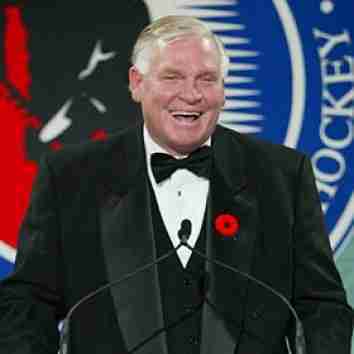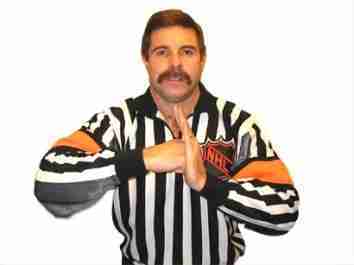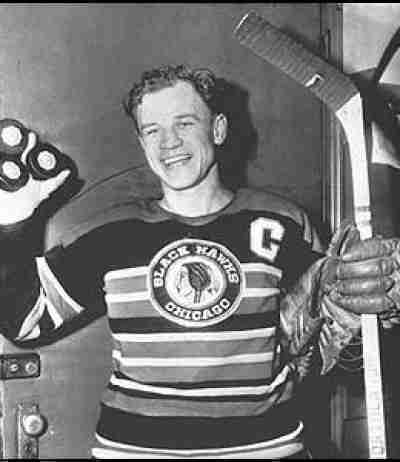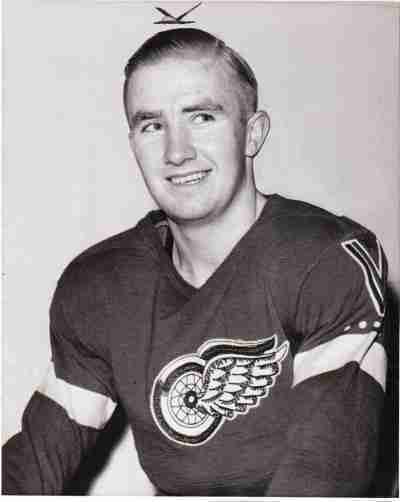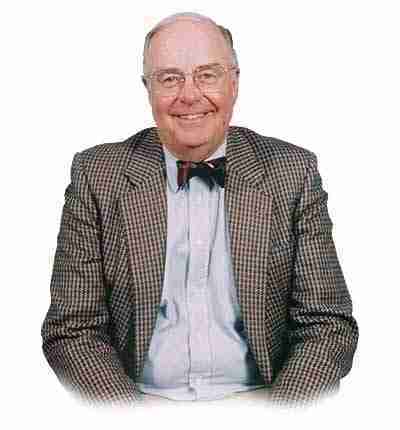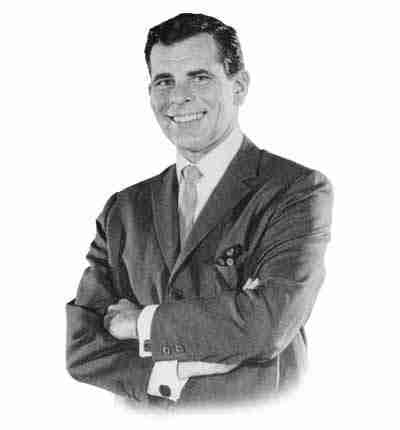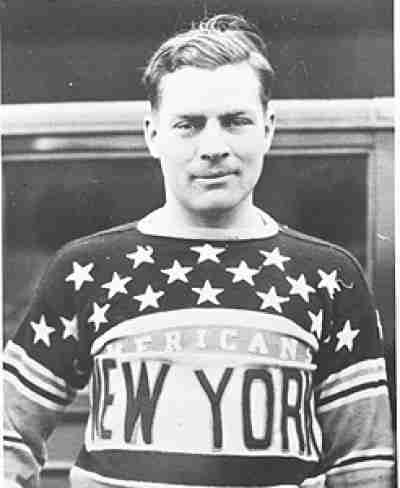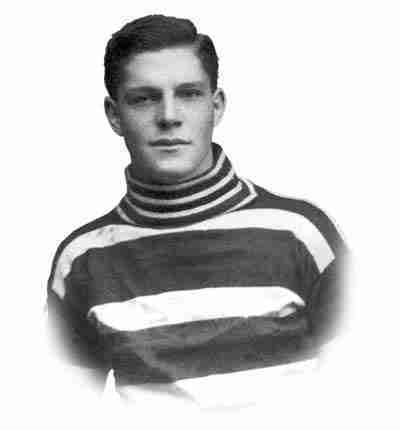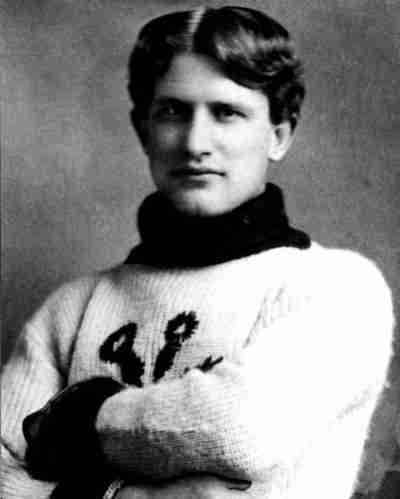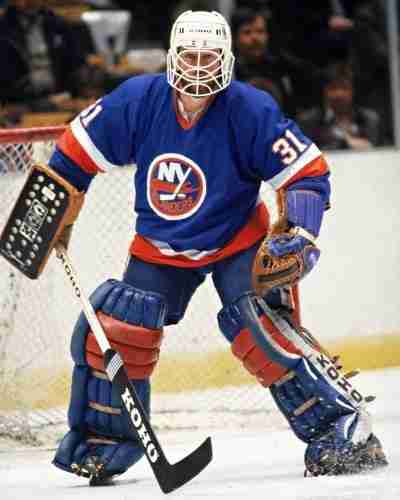Some people have called Bernie Federko one of the most underrated players in Hockey history and others have openly questioned this induction. Federko played all but one season in the NHL with the St. Louis Blues and had a career of over 1,100 points. He was called the “Magician” for his ability to expertly put the puck in the perfect position for his teammates to score and was the first player to get 50 assists in ten consecutive seasons.
Named “Boom Boom” for his powerful shot and feisty temperament, Bernie Geoffrion, was a Hall of Fame Right Winger who always seemed to be in the shadow of others while playing for the Montreal Canadians. Nowhere could that statement be more accurate when looking at one of Geoffrion’s first scoring title, whereby his own fans booed him when he passed teammate Maurice “Rocket” Richard when the latter was suspended by NHL President, Clarence Campbell for the remainder of the 1955 season.
A decent (though not necessarily spectacular) Goalie in his first nine years in the NHL and WHA, Bernie Parent’s game elevated to a new level upon returning to Philadelphia for a second stint for the Flyers.
A star Left Wing with the Montreal Canadians, Bert Olmstead did not always receive a lot of the same accolades that his star teammates did, but within the locker room, his worth was well known. Olmstead was not necessarily a good goal scorer, but we was a brilliant passer (he led the NHL in assists twice) and was a very good checker and his tenacious play in the corners gave him the nickname of “Dirty Bertie”. His legacy may not have been one as the greatest player in hockey history, but one who found a way to achieve the maximum of efficiency with the skills that he did have. It inspired the players around him, and freed the coaches to concentrate on other players as Olmstead was considered to be a player who coaches did not need to help out. Overall, Olmstead was a Second Team All Star twice, and a five time Cup winner (four with Montreal and once with Toronto) and had a resume that probably could have gotten him in the Hall a couple of years sooner than he did.
Bill Barber was converted to Left Wing from his Center position by Philadelphia Flyers Head Coach, Fred Shero. As it turned out, the move put him on a first line with Bobby Clarke, and Barber never looked back. He was a strong player who was punishing when he needed to be (he was a member of the Broad Street Bullies after all), was offensively skilled and was underappreciated for his defensive skills. The NHL recognized his ability by naming him to three Post Season All Star teams and he was a major part of the Flyers two Stanley Cup wins. Barber was forced to retire early at the age of 31 due to the deterioration of his left knee. It prevented him from getting to the magical 1,000 point mark, but the Hall recognized his overall talent and he got inducted in 1990.
Rightfully called the “First Ranger” (as he was the first player signed by New York, and their first captain), Bill Cook was a three time goal scoring champion in the National Hockey League and a three time post season First Team All Star. More importantly, he brought the Stanley Cup to Broadway twice in his tenure there. As the leader of the “Bread Line” with his brother, Bun Cook and Frank Boucher they terrorized the defenses of the NHL for years. It cannot be argued that Bill Cook is a fine addition to the Hall.
The “Cowboy”, Bill Cowley was easily one of the top playmaking forward in his era. Cowley was a three time assists leader and a one time points leader who won the Hart Trophy twice; albeit in the World War II era whereby the talent in the league was reduced. Still, he did well in that era and good enough in the one that followed (and prior to) and is also as a two time Stanley Cup winner. He may not be remembered as much as he should be, but be definitely belongs in the Hockey Hall of Fame.
Bill Durnan may have only played seven seasons in the National Hockey League, but his vast accomplishments were impossible to ignore. In six of his seven years, Durnan won the Vezina Trophy and was a First Team All Star. He would also backstop the Habs to the Stanley Cup twice. Had Bill Durnan entered the league sooner (he did not enter until he was 28, content to retain his amateur status) and not retired early (he retired at the age of 35, while still on top), it is possible that he might be considered among the best Goalies of all time. As such, he is the best Goalie that time seems to have forgotten.
An excellent two way Defenceman, Bill Gadsby did not have the best of fortune with the teams he played on, as even in the Original Six era, he only played 67 playoff games. Most of those playoff games were on good Red Wings teams from the 60’s, when he was still a good player, but not at his prime like he was the decade before.
Bill Hanley was selected for the Hockey Hall of Fame based on his lifetime service to the Ontario Hockey Association. Hanley was well regarded and served in the OHA in multiple capacities for decades. Still, Hanley is one of many administrators with the OHA who have been selected for Toronto, but when the Hockey Hall’s bio’s highlight is that he was a fair arbitrator, it is not exactly a rousing endorsement for induction.
A former seven year veteran of the NHL with the Chicago Blackhawks, Bill Hay’s Hockey Hall of Fame induction comes from his work as the Calgary Flames’ CEO and would later become the Chairman of the Hockey Hall of Fame.
Bill McCreary refereed 1,700 NHL Games and 282 NHL Playoff Games, including thirteen Stanley Cup Finals in a row. You don’t get those opportunities because you have a bias or are bad at your job! McCreary also officiated the Gold Medal Game in the 2010 Winter Olympics.
A career professional with the Chicago Black Hawks, Bill Mosienko may not have won a Stanley Cup in Chi-town, but he was an excellent forward who played in multiple All Star games. Mosienko was also a very classy player (he only ever had one fight in his NHL career and was rewarded with the Lady Byng Trophy in 1945. Winning that accolade was nice, but he also a perennial fixture on the annual points table and was one of the better players in Chicago when they were not exactly a league power.
An excellent two way Defenceman, Bill Quackenbush was one of the most disciplined players in the National Hockey League. Quackenbush rarely made mistakes on the ice. This was not just shown by his acumen with the puck, but his ability to stay out of the penalty box. He would become the first Defenceman to win the Lady Byng Trophy in a season in which he received ZERO penalty minutes. Quackenbush actually had a 131 game stretch without receiving a whistle from a referee. Although he never had the opportunity to hoist the Stanley Cup, he was a five time All Star and played in eight consecutive All Star games. It is likely though that his failure to win a Cup in the Original Six era (and his playoff PPG was a bit less than his regular season average) delayed his induction to the Hall of Fame.
Bill Torrey brought the expansion New York Islanders to prominence far faster than anyone would have thought. The former GM of the Oakland Seals, found a real home on Long Island and methodically built a team from the draft and acquired young talent who would grow into a dynasty. It is not a misrepresentation to say that Torrey built the team from scratch. He was the Islanders first employee in 1972, and the vision of team was all his. It worked, as in 1980; New York won the first of four consecutive Stanley Cups. As the architect of that dynasty, Torrey’s Hall of Fame induction was easy to justify.
Let’s talk about the good first. Bill Wirtz took over a lot of the operations of the Chicago Blackhawks in the late 50’s and the Hawks won a Stanley Cup in 1961. He would become the team President, and though Chicago did not win another Cup that decade, they remained a competitive and stacked franchise. Wirtz also served on numerous committees including the NHL Expansion, the U.S. Olympic and helped mediate the 1972 Summit Series.
American born, yet Canadian raised, Billy Burch was the second ever Hart Trophy winner and the second ever (though in the third year of its existence as Frank Nighbor won the first two) Lady Byng Trophy winner. Burch would become a consistent producer, primarily for the New York Americans where they marketed to the hilt his American birth certificate. However, as Burch never won a Stanley Cup (or even sniffed it), his delay to the Hockey Hall of Fame was understandable as he played in a National Hockey League where there were only a handful of teams.
A member of the famed Ottawa Silver Seven, Billy Gilmour was a multiple time Stanley Cup winner. Gilmour averaged nearly a goal a game, but was he a Hall of Famer? In that era, a goal a game was impressive (but somewhat common) and may not have been worthy of HOF credentials when looking around the league. Many players in that era entered the Hall without being a superstar, and Gilmour may be one of those.
The top goal scoring Centre for the Rat Portage/Kenora Thistles, Billy McGimsie averaged nearly three goals a game for his small town club. He spent his entire six year career there and was a large part of the team winning their lone Stanley Cup in 1907. The Thistles story is a good one, and McGimsie was a top player there, but does this team have too much love from the Hockey Hall of Fame?
Every dynasty needs a solid Goaltender, and the early 1980’s New York Islanders had Billy Smith. The man who is credited as being the first netiminder to score a goal (he did so in 1979), shared the duties in the pipes with Glenn Resch, but he took over the number one duties for the Isles, and he proved his worth over and over in the Stanley Cup playoffs. Billy Smith was at his best during crunch time, as his statistics, rings and 1983 Conn Smythe Trophy proved. Smith may not have been the most decorated during regular season play, but he was an All Star when it counted the most.


